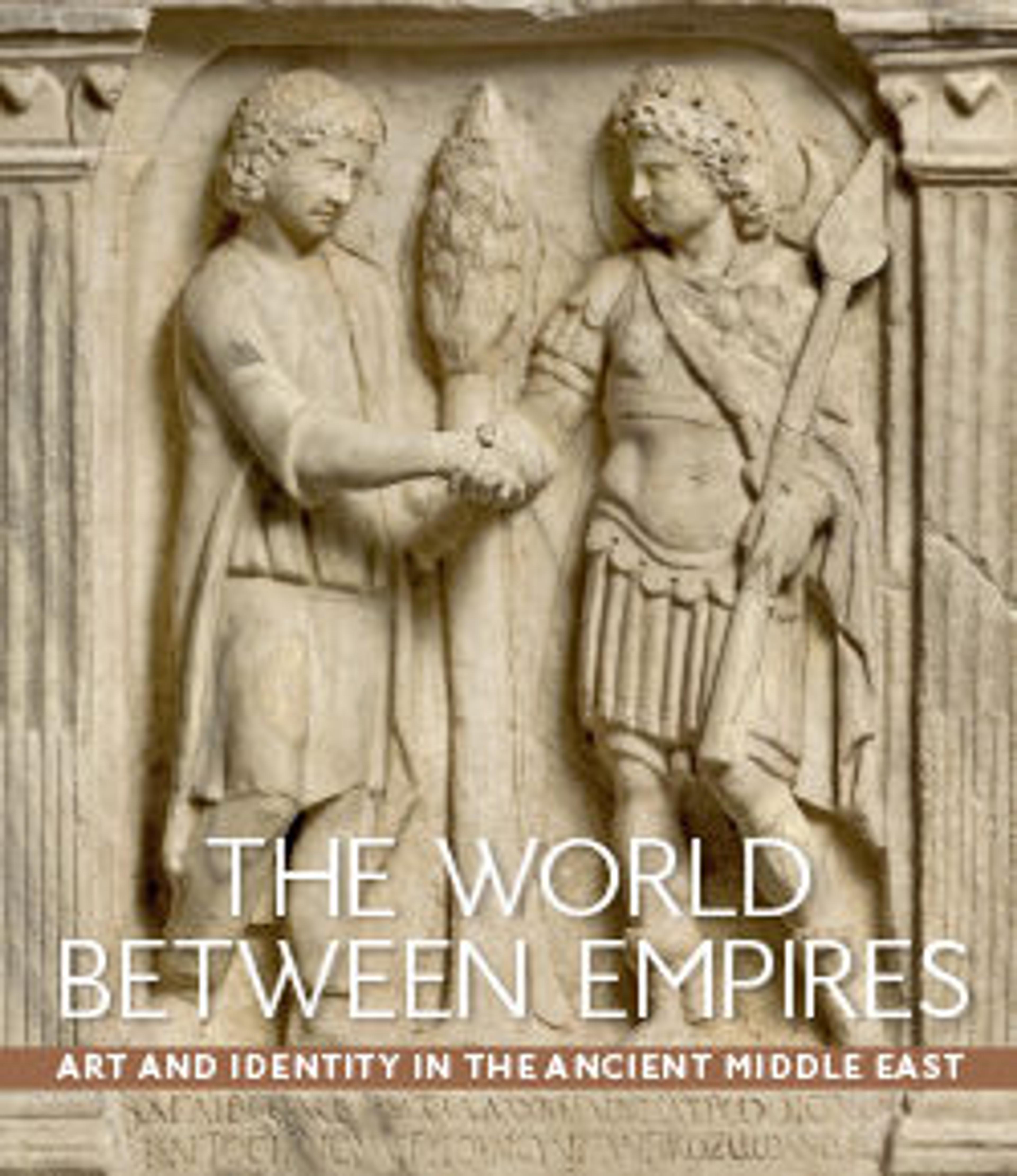Drachm
Numismatists – the scholars who study coins – refer to the ‘front’ side of the coin, which usually features the head of a person or god, as the ‘obverse,’ and the ‘back’ side as the ‘reverse.’
On the obverse of this silver coin, the head of the king faces to the left. He wears a pointed hat with earflaps and a diadem (the headband worn by victorious athletes in ancient Greece) tied over it. He has a large nose, a jutting chin, thick lips, prominent cheekbones and a big eye shown in profile. Four curls of hair emerge from beneath his hat. A border of dots surrounds the king’s head, though it is incomplete at the bottom.
The reverse shows a seated man facing right. He wears striped sleeves and trousers under a cloak, as well as a pointed hat with earflaps and a diadem and heeled boots with laces. In his hand he holds a bow with the bowstring upwards. He sits on a mound decorated with crosshatches. A Greek inscription, reading "of great king Arsaces" surrounds the man on three sides.
This coin was struck by the Parthian king Mithridates I (reigned ca. 171–138 B.C.). The king on the obverse is probably meant to be Mithridates himself, wearing the leather helmet worn by Parthian cavalrymen in battle. The identity of the figure on the reverse is unknown; perhaps it is an idealized Parthian king, depicted as an archer. The archer’s pose is modeled on the coins struck by the Seleucid kings, which show the Greek god Apollo. The Parthians did not strike coins before the foundation of their empire in the third century B.C., so they based their early coins on those of the Seleucid Empire, whose domains they conquered.
The inscription on this coin, like those on almost all Parthian coins, names the first ruler of the empire Arsaces I (reigned ca. 247–217 B.C.), rather than the current ruler Mithridates. It may be a reference to the dynasty founded by Arsaces, or perhaps the seated archer is meant to represent him. It is also possible that all Parthian kings were called ‘Arsaces’ as a title or throne name.
On the obverse of this silver coin, the head of the king faces to the left. He wears a pointed hat with earflaps and a diadem (the headband worn by victorious athletes in ancient Greece) tied over it. He has a large nose, a jutting chin, thick lips, prominent cheekbones and a big eye shown in profile. Four curls of hair emerge from beneath his hat. A border of dots surrounds the king’s head, though it is incomplete at the bottom.
The reverse shows a seated man facing right. He wears striped sleeves and trousers under a cloak, as well as a pointed hat with earflaps and a diadem and heeled boots with laces. In his hand he holds a bow with the bowstring upwards. He sits on a mound decorated with crosshatches. A Greek inscription, reading "of great king Arsaces" surrounds the man on three sides.
This coin was struck by the Parthian king Mithridates I (reigned ca. 171–138 B.C.). The king on the obverse is probably meant to be Mithridates himself, wearing the leather helmet worn by Parthian cavalrymen in battle. The identity of the figure on the reverse is unknown; perhaps it is an idealized Parthian king, depicted as an archer. The archer’s pose is modeled on the coins struck by the Seleucid kings, which show the Greek god Apollo. The Parthians did not strike coins before the foundation of their empire in the third century B.C., so they based their early coins on those of the Seleucid Empire, whose domains they conquered.
The inscription on this coin, like those on almost all Parthian coins, names the first ruler of the empire Arsaces I (reigned ca. 247–217 B.C.), rather than the current ruler Mithridates. It may be a reference to the dynasty founded by Arsaces, or perhaps the seated archer is meant to represent him. It is also possible that all Parthian kings were called ‘Arsaces’ as a title or throne name.
Artwork Details
- Title: Drachm
- Period: Parthian
- Date: ca. 171–138 BCE
- Geography: Iran
- Culture: Parthian
- Medium: Silver
- Dimensions: Thickness 0.25 cm, Diameter 1.88 cm
- Credit Line: Bequest of Joseph H. Durkee, 1898
- Object Number: 99.35.2952
- Curatorial Department: Ancient West Asian Art
More Artwork
Research Resources
The Met provides unparalleled resources for research and welcomes an international community of students and scholars. The Met's Open Access API is where creators and researchers can connect to the The Met collection. Open Access data and public domain images are available for unrestricted commercial and noncommercial use without permission or fee.
To request images under copyright and other restrictions, please use this Image Request form.
Feedback
We continue to research and examine historical and cultural context for objects in The Met collection. If you have comments or questions about this object record, please contact us using the form below. The Museum looks forward to receiving your comments.
